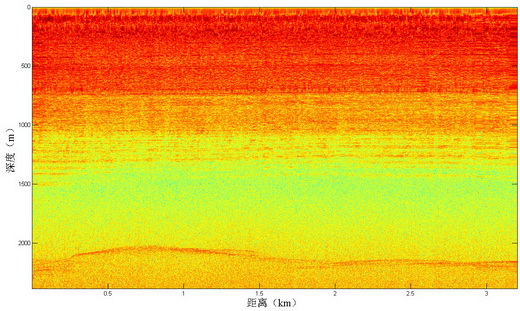

A scene of the experiment on the vehicle-mounted deep ice radar (Image by IECAS)

Under-ice topography near Zhongshan Station (Image by IECAS)
China’s 28th Antarctic expedition has recently returned in triumph.
China’s first polar deep ice radar system, developed by the Key Laboratory of Electromagnetic Radiation and Probing Technology, Institute of Electronics, Chinese Academy of Sciences (IECAS), was involved in the inland Antarctic scientific investigation. On the way from Kunlun Station to Zhongshan Station, the radar acquired mass under-ice detection data. Through the intense work of laboratory researchers, data processing has been partly completed. This batch of data has high imaging quality, shows clear under-ice layering and ice-rock interface, and will provide a basis for researches on climatic changes in Antarctic and topography and landforms of under-ice related regions. This is also first time for China to acquire detection data from a depth of more than 2,000 meters under ice with an independent ice radar equipment.
The inland under-ice detection experiment is an important part of the “Research on Key Polar Remote Sensing Technology and System Targeting Global Climatic Changes”, a key project under the 863 Program (China's National High-tech R&D Program). As one of the entities involved in the project, IECAS was in charge of developing the deep radar system. The radar, China’s first of its kind, participated in China’s 26th inland Antarctic scientific investigation in 2012 and acquired under-ice detection data in the inland of Grove Mountains. The research has drawn sustained support from the 863 Program. And a further research will provide technical support for China’s massive Antarctic and Arctic scientific investigations.

86-10-68597521 (day)
86-10-68597289 (night)

86-10-68511095 (day)
86-10-68512458 (night)

cas_en@cas.cn

52 Sanlihe Rd., Xicheng District,
Beijing, China (100864)

